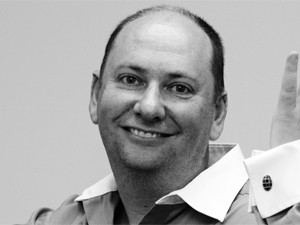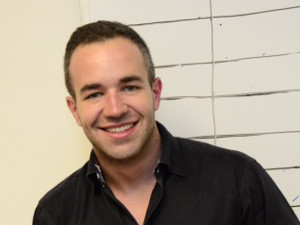
The unparalleled complexity South Africans face when it comes to choosing a cellphone package that will not break the bank has spurred a local start-up, which aims to mathematically work out optimal network operators and packages for corporates.
Johannesburg-based Howard Sackstein and Adam Pantanowitz two years ago started unpacking the complexities around cellphone contracts in SA to develop a means of offering companies frugal options when it comes to one of a corporate's most pivotal spends: telecoms. The result was Tariffic, officially launched today.
How it works, says Sackstein, co-founder of Tariffic and director of VOIP provider Saicom, is that companies provide three months' itemised bills to Tariffic, which then runs the information through its own software - developed by a team of engineers, programmers and mathematicians - and returns a comprehensive report indicating the most efficient cellular contracts and bundles available.
Complexity costs
Pantanowitz, co-founder and MD of Tariffic - who also lectures engineering students at the University of the Witwatersrand - says, with over 10 000 different combinations of cellphone options available to South Africans, few users know which choice is actually the right one for their needs.
"There has been this complex interplay between the Independent Communications Authority of SA and the networks in the marketplace. There is a whole lot of background as to where this emerges, but at another layer there are concepts in the market that make it not only difficult to choose, but also to understand the package you purchase from the networks.
"There are so many unusual and unexpected anomalies and that is just in how the tariffs are constructed. If you start to unpack the complexity across the market, you find complexity everywhere. You find it in billing systems operators are offering and in the discrepancies in the way information is presented to customers. The more you dig the more complexity you find."

Pantanowitz notes the concept of a "free phone" further complicates issues. "There is no such thing as a free phone. The networks bundle in what they call a CIB - or connection incentive bonus - and with that a customer can get some value back. But this in itself adds complexity, because it changes subscriptions."
The two telecoms buffs say, had they known two years ago just how difficult it would be to decipher SA's telecoms structures, they would not have gone through with it. "But the market needed it, so here we are."
Pantanowitz says Tariffic uses a combination of technologies, put together by the team, including Ruby on Rails, C# and Microsoft Bizspark.
Dramatic difference
World Wide Worx MD Arthur Goldstuck agrees the service is something SA "desperately needs".
He says World Wide Worx previously tried to create a formula for choosing the most advantageous cellphone package, but did not have the systems in place. "While Tariffic is not a first in what it is trying to achieve, it is a first in terms of how effective and powerful it will be in achieving it."
Compared to the impact of the recent drop in interconnect fees, says Goldstuck, the service Tariffic delivers will have a far more dramatic impact. According to a series of pilot reports conducted by the company in the lead-up to today's launch, 30% was the minimum amount companies could save by adopting the optimal plan as determined by Tariffic.
"The combination of interconnect reductions and optimising packages means it is possible for cellphone bills to drop dramatically over the next two years."
At launch, Tariffic is available only for businesses but Sackstein says the service will be extended to consumers in due course. "It is a great tool for corporates, but the consumer needs something like this just as much," says Goldstuck.
Deliberate deception?
Africa Analysis analyst Dobek Pater says the perception that mobile networks are happy to keep packages complicated because it makes them money is probably partly true.
"In the case of voice services, the ultimate (or close to it) in simplicity is providing a single tariff per minute/second and charging everything at that tariff without prescribed monthly minimum consumption limits. However, this would not necessarily benefit all users. For instance, some may prefer a package where they save the more they speak - your tariff per minute/second decreases with use."
Pater says, however, he does not think operators design packages to "trap" people into paying for services they do not use. "I think the guiding principle behind package designs is 'how can we make our customers use more of our services?', but also provide value to customers. Therefore, customers spend more, but they derive value from this spend. Inadvertently, there will be customers who waste some of the paid for services."
That said, Pater agrees operators could be doing a lot more to prevent such wastage. "For example, by setting no limit on data bundles. If you don't use all the data this month, keep it forever until you use it - instead of forfeiting unused data after three months."
He notes that some operators have started offering consulting services to their enterprise clients, whereby they advise the client on optimal packages and solutions for their business needs.
"This is more difficult in the consumer market. Consumers can call the customer help centre and discuss out-of-bundle rates, etc. Tariffs are advertised by operators, but explanation of what they mean is very limited in public advertising campaigns. However, it is also the consumer's responsibility to find out what they are buying. We tend to lay all the blame on the service providers, growing up with an expectation that everything will be provided to us; we just need to consume.
"International roaming rates, especially data, continue to be very high. Again, little proactive information is provided by the operators to users. In contrast, in the EU, a lot of attention has been ascribed to this and regulations developed for operators to limit the data roaming bill shock. I think we will see similar measures begin to be implemented by SA operators in the (not-too-distant) future. The first SA operator that decides to negotiate much lower roaming rates with its overseas partners may gain a lot of goodwill within certain market segments."
He says the growing evolution of packages came about with the operators beginning to segment their markets to a greater level of granularity, along lifestyle profiles, and to develop packages to suit these specific profiles to make their services more valuable and attractive to certain user groups. "Additional products, such as data-based products, brought another degree of complexity."
Share